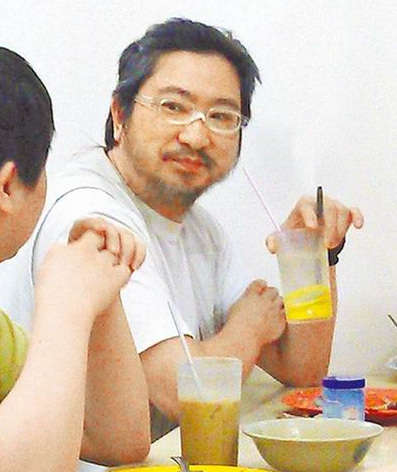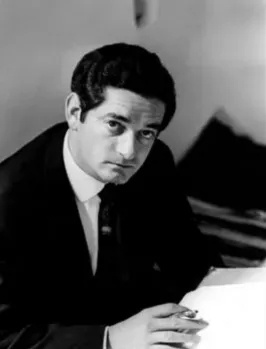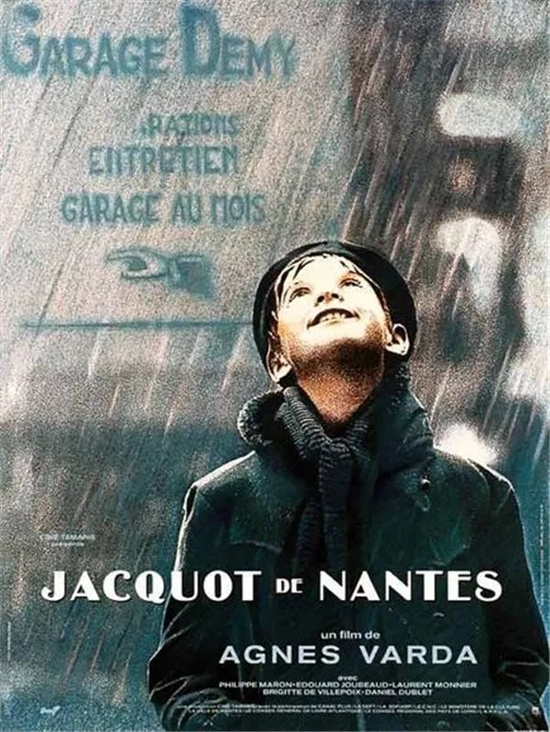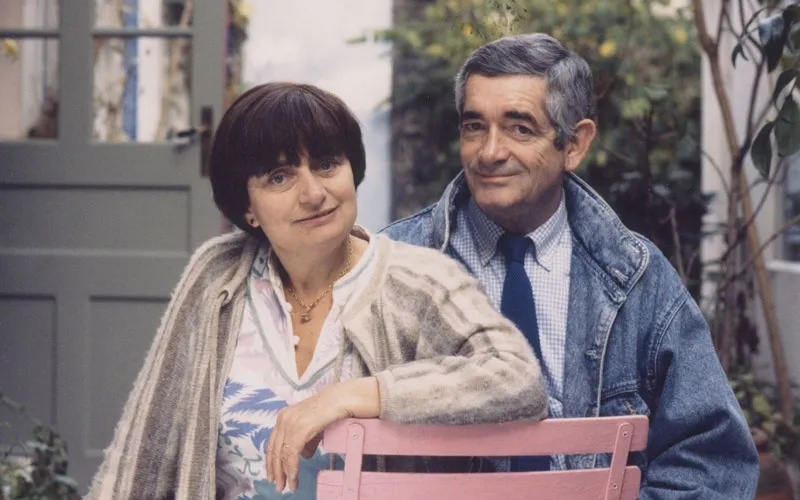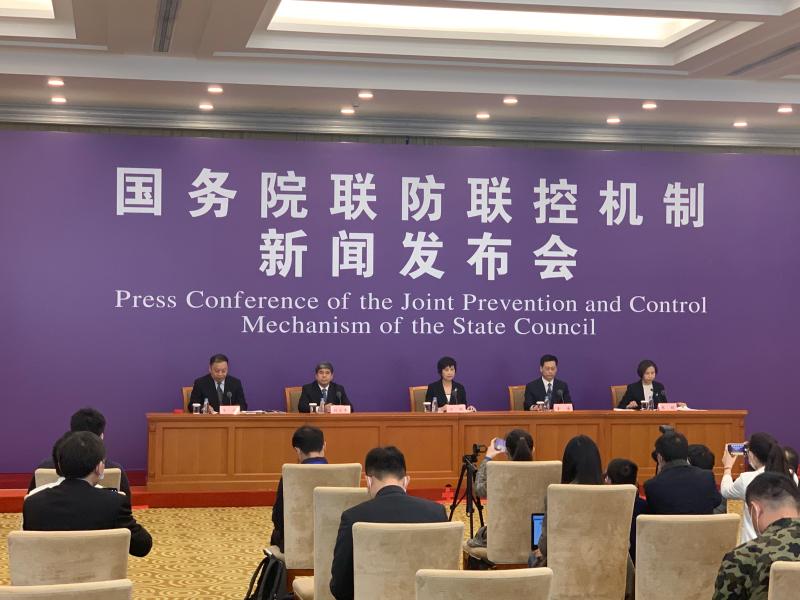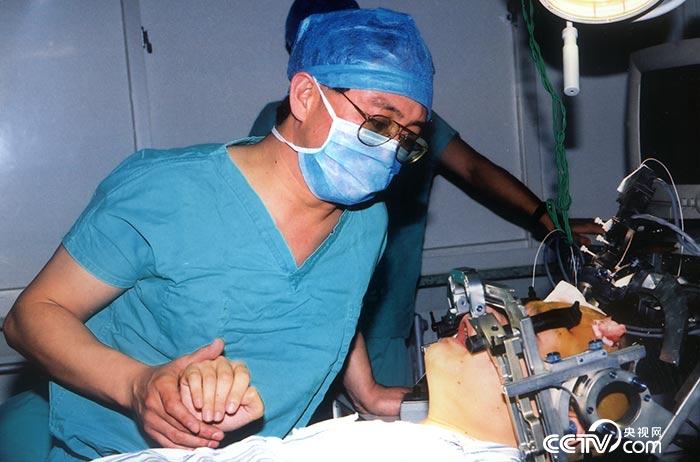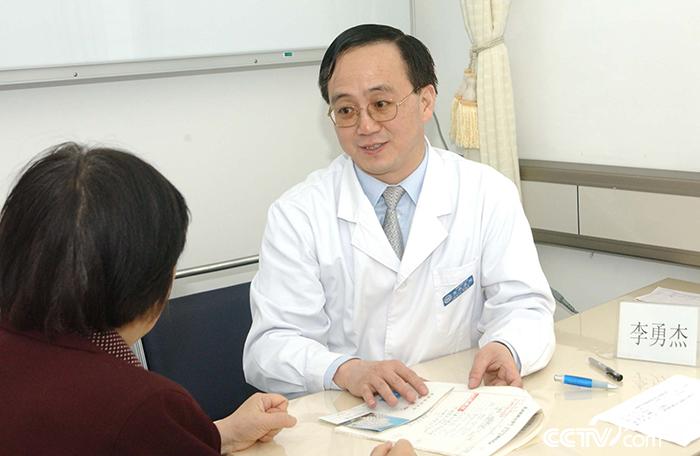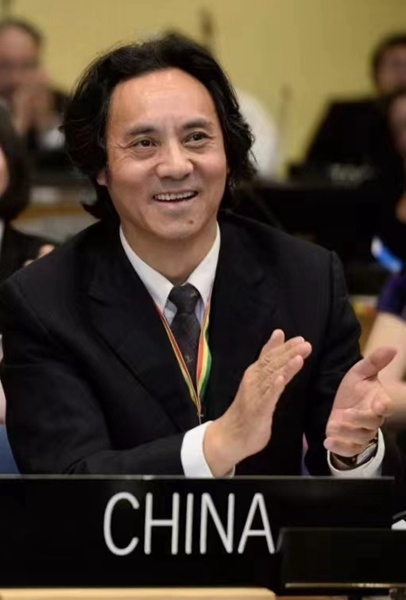Jing Zheng Fa [2015] No.23
The people’s governments of the districts and counties, the commissions, offices and bureaus of the municipal government, and the municipal institutions:
The Measures of Beijing Municipal People’s Government for Supervision and Inspection are hereby printed and distributed to you, please implement them carefully.
the people’s government of beijing city
April 23, 2015
Measures of Beijing Municipal People’s Government on Supervision and Inspection
Chapter I General Provisions
Article 1 These Measures are formulated in accordance with the Opinions of the General Office of the State Council on Further Strengthening the Supervision and Inspection Work of the Government (Guo Ban Fa [2014] No.42) and the Notice of the Beijing Municipal People’s Government on Printing and Distributing the Working Rules of the Beijing Municipal People’s Government (Jing Zheng Fa [2013] No.5), combined with the actual work of this Municipality.
Article 2 The supervision and inspection work is an important guarantee for implementing the strategic layout of "building a well-off society in an all-round way, deepening reform in an all-round way, ruling the country according to law in an all-round way and strictly administering the party in an all-round way", an important guarantee for implementing the major decision-making arrangements of the party and the government, and an important way for the government to fully perform its duties. Doing this work well is of great significance to ensure the full implementation of major decision-making arrangements of the Central Committee of the Communist Party of China, the State Council, the municipal party committee and the municipal government, fulfill the responsibilities of "four services", strengthen the strategic positioning of the capital city, and build a world-class harmonious and livable capital.
Article 3 We should regard supervision and inspection as an important part of government work, earnestly strengthen organizational leadership, put it on the important agenda, put forward supervision and inspection requirements when studying and making decisions, make clear the supervision and inspection items when deploying work, and check the implementation after making decisions.
Article 4 We should take ensuring the smoothness of government decrees and the implementation of work as the starting point and the end result of supervision and inspection work, as an important criterion to measure the effectiveness of supervision and inspection work, promote the government’s scientific decision-making, improve its work style, establish a new policy of keeping promises and actions, truly implement orders and prohibitions, ensure that everything is implemented and everything echoes, and continuously improve the government’s credibility and execution.
Chapter II Work Organization System
Fifth to establish a unified leadership of the government, the general office (room) comprehensive coordination, supervision and inspection agencies to organize the implementation of the supervision and inspection work system. The supervision and inspection institution is responsible for the formulation and implementation of the work plan, as well as the coordination of supervision and inspection work of various departments at the same level and the guidance of supervision and inspection work of subordinate units. The supervision and inspection institutions at all levels of the government system should strengthen cooperation with the supervision and inspection institutions of the party committees at the same level, and give full play to the supervisory role of the administrative supervision of the supervisory organs and the special audit of the auditing departments, the public opinion supervision of the news media, the auxiliary role of the opinion polls of the statistical departments, and the professional evaluation role of the third-party institutions.
Article 6 The Secretary-General of the municipal government shall be responsible for overall coordination and guidance of the supervision and inspection work of the municipal government system. The general office of the municipal government is the competent department of the municipal government’s supervision and inspection work, and is responsible for overall coordination and overall planning to promote the supervision and inspection work of the city’s government system; The municipal government supervision room is located in the general office of the municipal government. It is a full-time institution that performs the duties of supervision and inspection of the municipal government. It is mainly responsible for organizing, coordinating and guiding the supervision and inspection work, and conducting direct supervision on major decision-making matters.
Article 7 The county governments, departments and units of the municipal government are the concrete implementation units of the decision-making arrangements of the municipal party committee and the municipal government, and bear the main responsibility. The main responsible comrades are the first responsible persons for the supervision and inspection work, and take overall responsibility for the implementation of the work. At the same time, the district and county governments should make it clear that the executive deputy district (county) heads, and all departments and units of the municipal government should make it clear that a responsible comrade is directly in charge of the supervision and inspection work. District and county governments should set up special supervision and inspection institutions; All departments and units of the municipal government should clearly undertake the supervision and inspection functions, and the units with heavy workload and heavy tasks should set up special supervision and inspection institutions.
Chapter III Work Tasks and Division of Labor
Article 8 The main task of supervision and inspection work is to promote the implementation of major decisions and arrangements made by the Party and the government. It mainly includes: supervision and inspection of the implementation of laws, regulations and normative documents, supervision and inspection of the implementation of matters decided at important meetings, supervision and inspection of the implementation of instructions and tasks assigned by leading comrades and other matters that need supervision and inspection. We should pay special attention to the supervision and inspection of the implementation of important documents, important meetings, important speeches and instructions of leading comrades and other major decision-making arrangements in the Central Committee of the Communist Party of China and the State Council.
Ninth according to the supervision and inspection tasks, the division of labor is as follows:
(a) the documents issued by the general offices of the Central Committee of the Communist Party of China, the State Council, the General Office of the Central Committee of the CPC and the State Council, and the leading comrades of the municipal party committee and the municipal government instruct the relevant districts, counties, departments and units to implement them, and the general office of the municipal government is responsible for supervision and inspection, and the main responsible unit shall, jointly with the co-organizers, do a good job of implementation as required.
(two) in the name of the municipal party committee, the municipal government or the general office of the municipal party committee and the general office of the municipal government, the general office of the municipal government shall jointly carry out supervision and inspection according to the relevant requirements; Documents issued in the name of the municipal government and the municipal government office shall be supervised and inspected by the municipal government office; By the unit that submitted the document as the main responsible unit, in conjunction with the co-organizers to do a good job of implementation as required.
(three) the important meeting of the municipal government decided matters, the main leaders of the municipal government presided over the special meeting of the municipal government decided matters of supervision and inspection and feedback report by the general office of the municipal government; The supervision and inspection of the matters decided by the special meeting of the municipal government presided over by other leading comrades of the municipal government shall be the responsibility of the general office of the municipal government or the relevant departments that undertake the meeting.
(four) the instructions of the party and state leaders, and the supervision, inspection, feedback and coordination of the instructions, instructions and matters assigned by the leading comrades of the municipal party Committee and the municipal government shall be in charge of the general office of the municipal government; Matters assigned by leading comrades in the investigation and other matters related to emergency management, external liaison, proposal handling, government information and other work areas that need supervision and inspection, according to the principle of "who undertakes, who supervises", the corresponding undertaking department shall be responsible for supervision and inspection according to the division of responsibilities.
(five) the municipal government leaders in foreign visits and activities at home and abroad to determine the need to implement matters by the foreign affairs department of the municipal government is responsible for collecting and sorting out, and urge the relevant departments to implement.
Tenth involves a number of departments to undertake the inspection matters, the main unit responsible for undertaking the task is mainly responsible for the implementation of the work, and the co-organizers bear corresponding responsibilities. The main responsible unit should take the initiative to communicate with the co-organizers, and the co-organizers should actively cooperate with the work to form a joint force for implementation.
Chapter IV Related Work System
Eleventh to continuously deepen and improve the relevant work system, to ensure that the supervision and inspection work is carried out in a standardized and orderly manner.
(a) the deadline for reporting system. The municipal government should take the initiative to report the implementation of major decision-making arrangements to the Central Committee of the Communist Party of China, the State Council and the Municipal Party Committee in a timely manner. The Central Committee of the Communist Party of China, the State Council and the municipal party committee and municipal government held an important meeting, after the introduction of major decisions, after the release of important speeches by leading comrades, in principle, the main responsible unit in conjunction with the co-organizers should submit to the municipal government to convey the deployment and promote the implementation within one month; Submit the work progress and effect within 3 months; Further implementation shall be submitted within half a year and one year. Major progress, important situation, and the implementation of emergency supervision matters should be reported in a timely manner.
(two) major special supervision system. According to the important documents and meetings of the Central Committee of the Communist Party of China, the State Council and the municipal party committee and municipal government, as well as the important instructions and instructions of leading comrades, the municipal government inspection team will be formed in a timely manner, and the staff will be deployed to concentrate their efforts and time to carry out on-the-spot inspection activities, understand the truth, coordinate services and supervise the implementation.
(3) Information notification system. On the implementation of key supervision matters involving the overall situation, the general office of the municipal government is responsible for reporting on a monthly basis in the form of a monthly special report on key supervision matters; For units that have achieved remarkable results, it is necessary to sum up experience and exchange and promote them; The work progress is slow, ineffective implementation of the unit, to point out the problem, instructed to report the reasons, to be informed criticism and urge the rectification.
(4) Dynamic management system. Establish and improve the process-based work norms, and realize the whole process and dynamic management of the government’s major decision-making arrangements. When the government makes major decision-making arrangements, the supervision and inspection institutions should establish the supervision and inspection work ledger simultaneously with relevant departments, refine the division of tasks, clarify the responsible units, specify the completion time limit, strengthen follow-up supervision, and ensure the implementation of tasks.
(5) Joint supervision system. According to the needs of the work, for major decision-making tasks involving many departments, which are difficult to implement or professional, the government supervision and inspection agencies may jointly carry out supervision and inspection with the supervision and inspection agencies of the party committees at the same level or professional departments.
(6) Regular consultation system. Led by the supervision and inspection institutions and attended by relevant departments, regular communication meetings will be held to inform the progress of major decision-making arrangements, especially those that have publicly promised to complete the time limit, and coordinate and solve problems encountered in the work.
(7) Investigation and review system. For the important supervision matters concerned by the leaders and involving the vital interests of the masses, the supervision and inspection institutions should conduct on-the-spot investigation and review, and carry out "looking back" and "re-supervision" in a timely manner to consolidate the implementation results and ensure the effectiveness.
(eight) supervision and investigation system. Actively carry out supervision and research around the hot issues that the masses care about, the difficult issues in the implementation of decision-making and the key issues that leading comrades pay attention to. Go deep into the grass roots, find problems, find out the reasons, put forward countermeasures and suggestions, and provide reference for scientific decision-making.
(9) Performance management system. Incorporate the implementation of supervision matters into the scope of government performance management. Organize experts, scholars and third-party evaluation agencies to evaluate the performance of decision-making implementation.
Chapter V Accountability
Twelfth district and county governments, municipal government departments and units should seriously cooperate with the work of supervision and inspection agencies, and shall not pass the buck, make false reports; Inspectors should adhere to principles, strictly observe work discipline, and ensure honesty and fairness. If dereliction of duty, violation of discipline and law are found in the implementation of major decision-making arrangements, the relevant information and clues should be transferred to the supervisory organ in a timely manner, and the responsibility should be seriously pursued.
Chapter VI Team Building
Thirteenth district and county governments, municipal government departments and units should be fully staffed with full-time (part-time) inspectors, and select personnel with good political quality, hard ideological style, strong professional ability and familiarity with all aspects to engage in supervision and inspection work. It is necessary to strengthen the training of inspectors, improve the ability of comprehensive coordination, policy grasp, investigation and research, and build a team of supervision and inspection cadres who are brave in taking responsibility, daring to take responsibility and grasping implementation. At the same time, it is necessary to provide necessary conditions and financial guarantee for inspectors to carry out their work.
Fourteenth in order to further strengthen the supervision and inspection work, in the city, district and county governments to establish a system of inspectors. The inspector is a person with high political quality, rich work experience, courage to take responsibility, good at finding problems, communication and coordination, and strong ability to solve problems. The main duties of the inspector are: to supervise and inspect the implementation of major decision-making arrangements of the Central Committee of the Communist Party of China, the State Council, the municipal party Committee and the municipal government; Supervise and investigate the implementation of key work in cities, districts and counties, and make unannounced visits to understand and reflect the demands, opinions and suggestions of grassroots cadres and the masses; Timely feedback to supervise and inspect the work.
Chapter VII Supplementary Provisions
Article 15 The supervision and inspection work of district and county governments, municipal government departments and municipal institutions shall be implemented with reference to these measures, and corresponding implementation rules shall be formulated according to the actual work.
Sixteenth approach by the municipal government office is responsible for the interpretation of.
Article 17 These Measures shall be implemented as of the date of promulgation.
Attachment: 1. Work Procedures for Major Special Supervision of the Municipal Government
2 important meetings of the municipal government to implement the supervision procedures.
3 important documents of the municipal government to implement the supervision work procedures.
4 major decisions of the municipal government, leadership instructions, assigned matters supervision procedures.
5 municipal government key supervision matters monthly special report work procedures
6 "inspection notice", "inspection reminder" and "inspection withdrawal" sample table (omitted)
Annex 1
Municipal government’s major special inspection procedures
Major special inspection refers to the large-scale on-the-spot inspection activities organized and carried out by the general office of the municipal government, which is composed of the Central Committee of the Communist Party of China, the State Council, important documents and important meetings of the municipal government, and the spirit of important instructions and instructions of leading comrades. Major special inspection procedures include five steps: inspection project establishment, mobilization training, on-site inspection, comprehensive report and rectification implementation.
First, the supervision project
Inspection project generally includes four links: making inspection plan, drafting inspection plan, reporting to leaders for approval, and issuing inspection notice.
(a) to formulate the inspection plan. The general office of the municipal government, in consultation with the relevant units, selects the work that affects the overall situation, has strong timeliness and is concerned by leading comrades as a major special inspection item, and formulates the annual major special inspection plan of the general office of the municipal government for approval according to the procedures. During the implementation of the plan, relevant contents should be adjusted in time according to the changes of the situation and the requirements of leading comrades.
(two) drafting supervision plan. The general office of the municipal government shall, in accordance with the annual major special inspection plan, study and formulate major special inspection plans in consultation with relevant units. Generally, it includes: inspection basis, inspection content and key points, inspection time, inspection objects, inspection team members, mobilization training, inspection methods, inspection report methods, news propaganda, and inspection work organization and coordination.
(three) reported to the leadership for approval. The general office of the municipal government drafted instructions, and submitted the inspection plan to the leaders of the municipal government for instructions according to the procedures. In the request, we should clarify the basis, purpose and method of carrying out major special inspections, briefly introduce the drafting process of the inspection plan, summarize the opinions of relevant departments and units, and put forward suggestions for carrying out major special inspections. According to the inspection plan, draft the inspection notice and submit it for approval together with the inspection plan.
(four) issued a notice of supervision. According to the inspection plan approved by the leading comrades, the inspection notice is issued.
Second, mobilization training
Mobilization training is specifically undertaken by the general office of the municipal government. Generally, it includes four links: forming inspection team, determining training content, compiling inspection manual and organizing mobilization training.
(1) to form an inspection team. The general office of the municipal government informed the relevant departments and units participating in the inspection to register, and put forward the requirements for the level and number of personnel participating in the inspection. According to the registration situation, determine the group list, and clarify the responsible persons, contacts and members of each group.
(2) Determine the training content. It mainly includes: defining the objectives and tasks of supervision, introducing relevant information, interpreting policy documents, teaching supervision methods, putting forward work requirements, and determining the division of labor of supervision.
(three) the supervision manual. The important documents involved in the work and the important speeches, instructions and instructions of leading comrades, as well as the inspection work plan, the list of grouping personnel, the contact information of each group, the work requirements and relevant regulations, will be compiled into a book, the classification will be determined, and the inspection team will be distributed.
(4) Organizing mobilization training. Generally, 3 days before the on-site inspection, all inspectors will be trained in centralized mobilization. The main agenda includes: inviting leading comrades to mobilize and deploy major special inspection work and put forward requirements; Ask the responsible comrades or experts of the relevant units to introduce the situation and interpret the policy; Organize inspectors to study and communicate in groups, be familiar with relevant policies and documents, and clarify the division of tasks.
Third, on-site supervision
Field inspection generally includes four links: determining the itinerary, carrying out field inspection, feeding back inspection opinions and submitting group reports.
(1) Determine the itinerary. Each inspection team timely contacted the inspected districts, counties or departments to study and refine the inspection plan, and put forward specific requirements for the inspection work of this group.
(two) to carry out on-site supervision.
1. Listen to the situation report. In order to fully understand the implementation of the work, we should listen to the reports on the work of the districts, counties and departments, and master the implementation, successful experience, effective practices and existing problems of the key issues of supervision.
2. Conduct field visits. According to the inspection tasks and inspection scope, we should go deep into the reality, the grassroots and the masses, and take unannounced visits to check the progress of various work and the implementation of relevant policies.
3. Make an objective assessment. The inspection team made a timely quantitative and qualitative analysis of the implementation of relevant policies and measures, made a realistic assessment of the progress and effect, and found out the existing problems.
4. Put forward rectification requirements. The inspection team carefully sorted out the outstanding contradictions and problems found, studied and analyzed the subjective and objective reasons, and put forward rectification requirements.
(three) feedback supervision opinions. Each inspection team timely gives feedback to the inspected districts, counties or departments, evaluates the overall situation, points out the existing problems, and puts forward rectification requirements.
(4) Submit the group report. The heads of the inspection teams are responsible for organizing the drafting, forming a group report with detailed contents, clear views and clear suggestions, and submitting it to the municipal government inspection room in time after the on-site inspection.
Fourth, the comprehensive report
The comprehensive report generally includes three links: drafting inspection report, reporting inspection situation and reporting inspection report.
(1) Drafting the inspection report. After the on-the-spot inspection, the general office of the municipal government convened a meeting of the heads of the inspection teams or the writers of the group reports in time, listened to the reports of the inspection teams, exchanged the inspection work, and drafted the inspection report.
(two) report the inspection situation. The general office of the municipal government shall, as the case may be, draw the executive meeting or special meeting of the municipal government to listen to the report on the work of the inspection team. If the leaders agree to report, the general office of the municipal government shall, jointly with the relevant units, prepare for the report.
(three) submit the inspection report. According to the instructions of the leading comrades and the spirit of the meeting, the inspection report will be further revised and improved, and the opinions of relevant units will be solicited in writing, and then reported to the leading comrades according to the procedures.
V. Implementation of rectification
The implementation of rectification generally includes three links: informing the inspection situation, urging the rectification of problems, and reporting the rectification results.
(1) Informing the inspection. The general office of the municipal government will notify the inspection report approved by the leading comrades in the form of "inspection and feedback".
(2) urge the problem to be rectified. The general office of the municipal government issued an inspection notice on the problems found in the inspection, put forward the work requirements, defined the working time limit, urged the relevant districts and counties or departments to do a good job in rectification and implementation, and reported the rectification report on schedule.
(3) Report the rectification results. The rectification report submitted by the relevant districts, counties or departments shall be submitted to the leading comrades after being audited by the general office of the municipal government. For the key issues concerned by leading comrades, depending on the situation, the rectification situation can be verified by means of return visit and review.
Annex 2
The important meeting of the municipal government to implement the supervision procedures.
First, project establishment
According to the minutes and minutes of the meeting of the municipal government, timely summarize the important decisions of the meeting that need to be supervised, clarify the responsible units, and stipulate the time limit for completion.
Second, turn to do
In accordance with the principle of "who undertakes, who supervises", the "Notice of Supervision" will be issued, and the important decisions of the meeting will be notified to the relevant units in a timely manner.
Third, reminders
The conference organizer should strengthen communication with relevant units to understand the progress of the implementation of important decisions of the conference. For the important decisions of the meeting that have not been implemented within the prescribed time limit, timely reminders will be made, and the relevant units will be instructed to report the progress of handling and the reasons for not implementing them, and the time limit for implementation will be extended.
Fourth, focus on supervision
The relevant units in the report of the extension period has not been implemented, need to be investigated and held accountable, organized by the conference organizer in consultation with the municipal government supervision room investigation, focus on supervision, find out the reasons for the failure to implement, and put forward suggestions and report to the leading comrades. When necessary, organize on-site inspection in the name of the municipal government or the general office of the municipal government.
V. Feedback of inspection report
After receiving the inspection task, the relevant units should quickly organize the implementation according to the requirements and report the implementation of important decisions of the meeting within the prescribed time limit.
VI. Audit Report
The meeting organizer shall review the implementation of important meeting decisions reported by relevant units. If the situation is unclear, further verification shall be carried out; If the handling results do not meet the requirements, the "Inspection Withdrawal Form" will be issued and returned for re-handling.
VII. Summary Report
In accordance with the method of "one inspection per meeting and one feedback per month", the conference organizer will regularly sort out the implementation of important decisions of the monthly inspection meeting and report them to leading comrades.
Annex 3
Procedures for the supervision of the implementation of important documents of the municipal government
I. Task decomposition
(a) when drafting a document, the document organizer should consider the responsibility for the implementation of the tasks mentioned in the document. When the conditions are ripe, the division of responsibilities can be listed in the document, or a separate written division of key tasks will be submitted for approval with the document.
(two) after the issuance of the document, the leading comrades require the formulation of the division of key tasks, and the general office of the municipal government or the organizer shall formulate the division of labor plan according to the instructions and instructions of the leading comrades, and submit it for approval according to the document processing procedures.
(three) when formulating the division of labor plan, it is necessary to clarify the responsibility to specific units; Involving more than two units, it is necessary to fully solicit opinions and clarify the lead unit.
(4) The division of labor plan should put forward a scientific and reasonable time limit for the completion of key tasks, and require the lead unit to actively play the role of overall coordination, timely carry out mid-term inspection and task completion evaluation according to the nature and needs of the tasks, and report to the municipal government.
Second, the situation report
(a) in accordance with the principle of "who formulates the division of labor scheme, who takes the lead in supervising", if the division of labor scheme requires mid-term inspection and task completion assessment, the general office of the municipal government or the organizer shall urge the relevant units to report the interim progress and task completion to the municipal government in a timely manner; There is no requirement to carry out mid-term inspection and task completion assessment, and the relevant units shall report the completion to the municipal government according to the completion time limit.
(two) the interim progress and task completion report submitted by the relevant units, in accordance with the principle of "who supervises, who submits for approval", by the general office of the municipal government or the organizer according to the document processing procedures for examination and approval.
Third, supervision and inspection
(a) to find that the work progress is slow, the general office of the municipal government or the organizer should promptly urge the relevant units to speed up the work progress. If the tasks are not completed within the prescribed time limit, the general office of the municipal government or the organizer shall, according to the needs, issue a notice of inspection, request to report the progress and the unfinished reasons, and propose to extend the time limit for completion. By the organizer is responsible for the supervision, if necessary, please consult the general office of the municipal government to jointly carry out supervision.
(two) involving major decision-making arrangements, the need to organize special supervision, at the beginning of each year by the municipal government office in consultation with the relevant units into the annual major special supervision plan, in accordance with the "municipal government major special supervision procedures" to organize the implementation.
Supervise the implementation of other important documents, and refer to this procedure.
Annex 4
The municipal government’s major decision-making matters, leadership instructions, assigned matters supervision procedures.
First, decompose the project
(1) Project establishment. Where the government decides or the main leading comrades give instructions and assign matters that need to be supervised and inspected, the general office of the municipal government is responsible for classifying and decomposing, refining the division of tasks, defining the responsible units, determining the time limit for completion, putting forward opinions to be done one by one, and establishing work ledgers.
(2) Assigned. The general office of the municipal government shall, according to the contents of the inspection items and the responsibilities of the relevant units, timely hand over the inspection items to the specific contractor in the form of convening an assigned meeting or issuing the "Inspection Notice", and clarify the relevant requirements.
(3) undertaking. After receiving the inspection, the organizer shall submit it to the principal responsible comrades of the unit for review, establish the project management responsibility system, formulate the implementation plan, and handle it carefully as required.
Second, supervision and inspection
(1) supervision. Take on-site supervision, joint supervision, unannounced visits, telephone reminders, network supervision and other ways to implement the whole process management of supervision matters. For important supervision matters, it is necessary to clarify the person in charge of supervision; For matters that cannot be implemented on schedule, the organizer should be urged in time; If the implementation results do not meet the requirements, they should be returned to do it again.
(2) review. The general office of the municipal government is responsible for auditing the project management responsibility system, implementation plan, handling situation and feedback report of the organizer, and conducting on-site verification on the handling of important matters with high social concern and great influence.
(3) report. The organizer is responsible for timely feedback and reporting the implementation. The feedback report should be practical and realistic, and report one thing at a time, focusing on the outstanding difficulties and problems existing in the implementation, which will be reported after being issued by the main responsible comrades of this unit.
Affected by objective factors, after many efforts, the work requirements and major decision-making objectives of the municipal government have not been implemented as planned, and the organizer shall report to the municipal government in writing within the prescribed time limit and explain the reasons; If it is necessary to adjust the task and the time limit for handling, the organizer shall ask the municipal government for instructions in writing, and after approval by the municipal government, the supervision and inspection institutions shall supervise and inspect according to the adjusted task objectives.
(4) filing. The completed inspection items shall be collected, sorted and filed in accordance with the relevant provisions, and shall be handed over to the archives department for management on a regular basis or filed for future reference by the supervision and inspection institutions.
Third, performance appraisal
The general office of the municipal government shall, in accordance with the relevant provisions of the municipal government’s performance management, carry out performance evaluation on the implementation of supervision matters by the organizer through task formulation, process monitoring, year-end debriefing and evaluation feedback.
Annex 5
Working procedure of monthly special report on key supervision matters of municipal government
The key supervision items include: the items that need to be supervised and implemented in the municipal government documents; Important meeting of the municipal government decided to focus on matters that need to be supervised and implemented; Matters that need to be supervised and implemented in the important instructions of the leaders of the municipal government.
First, comb regularly
Before the 3rd working day of each month, the relevant offices of the general office of the municipal government shall sort out the implementation of key supervision matters, and send them to the municipal government supervision room according to four categories: those that have not been completed within the extended time limit, those that are being processed within the extended time limit, those that are being processed within the specified time limit, and those that have been completed. For the matters being handled within the extended time limit, it is necessary to explain the reasons for not being settled within the prescribed time limit and put forward the extended time limit for handling; For matters that have not been settled within the extended time limit, it is necessary to explain the reasons for not being settled and clarify the responsible units that have not been settled.
Second, the examination and approval
The municipal government supervision room comprehensively summarizes the implementation of key supervision matters, and publishes the implementation of three types of matters, such as being handled within the extended time limit, being handled within the prescribed time limit, and having been completed, in the "Supervision and Feedback (Monthly Special Report on Key Supervision Matters)" (see Table 1), and submits it for approval according to procedures; The relevant information about the unfinished matters within the extended time limit will be published in the Supervision and Feedback (Supplement) (see Table 2) and submitted for approval according to the procedures.
Third, print and distribute
For the inspection and feedback (monthly special report on key inspection matters) examined and approved by the competent leaders, the municipal government inspection room shall print and send the mayor, deputy mayor, secretary general and deputy secretary general in time, and send a copy to the relevant districts, counties, departments and relevant units; On the examination and approval of the supervision and feedback (Supplement), the municipal government supervision room timely printed and sent to the relevant leading comrades of the municipal government and the relevant deputy secretary general, and copied to the relevant units.

